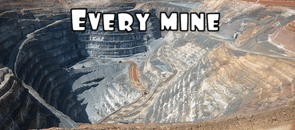Enhanced Location Information:
Users can now access latitude and longitude coordinates, as
well as accuracy and elevation information directly from the point map. This
addition provides users with more comprehensive location details.
Field Notes Feature:
In response to user requests, Mine Mapper 3.0 now allows
users to enter field notes directly into the point map, enhancing the
capability for detailed annotations and documentation.
Elevation Data Inclusion:
The final version features the incorporation of elevation
data. Alongside latitude, longitude, and accuracy information, Mine Mapper now
displays elevation data. It is important to note that this elevation data is
presented in meters above mean sea level and is sourced through Google's
Elevation services.
While Google's Elevation services are valuable, the accuracy
may not match that of differential GPS (dGPS) data. For precise elevation
measurements, the use of dGPS and Ground Control Points (GCPs) is recommended. In
Kerala, many Recognized Qualified Persons (RQPs) use Google Earth elevation data
for the preparation of mining plans and hence the data from Mine Mapper will be
useful to cross check the values provided by RQPs. However, the users should be
aware that the elevation data provided by Google is based on SRTM data
collected in the year 2000. The elevation data presented in Mine Mapper 3.0
reflects the surface elevations as of the year 2000, meaning any substantial
changes to the Earth's surface, like large excavations or quarries made after
2000, won't be reflected in Mine Mapper's elevation data. Users are reminded
that Mine Mapper captures the original surface of quarries, providing a
historical perspective on the terrain.
While acknowledging the potential errors in Google's
elevation data, it's crucial to recognize that, even if the actual elevation
(i.e., height above mean sea level) differs, the gradient or slope of the
surface is accurately depicted in Google's data. In the context of geological
reserve and mineable mineral reserve estimation, what matters is the slope of
the terrain, not necessarily the precise elevation of the points used in
generating the contour map. Therefore, as long as the source of the elevation
data remains consistent, the computation of volume poses no issues during the preparation
of a scheme of mining or the final mine
closure plan.
Users can cross-check elevation data with Survey of
India Toposheets for additional verification.
Those who wish to receive
the Mine Mapper 3.0 Official Release, please send an email to
bsebastian@gmail.com or theminemapper@gmail.com.














0 Comments